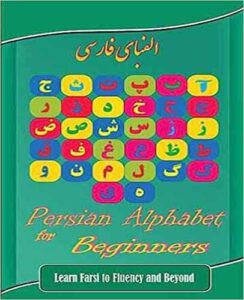Table of Contents
ToggleAn effective way of Learning Persian
Incorporating poetry into the elementary school curriculum can profoundly affect students’ learning and development. With its rhythmic and expressive language, poetry engages young learners uniquely, fostering their cognitive, emotional, and linguistic growth. This article explores the benefits of teaching by reading poetry and its positive impact on elementary school students.
Poetry is a powerful literary form that captivates the imagination and emotions. Reading and engaging with poetry can provide elementary school students with a stimulating and enriching learning experience. This form of teaching enhances literacy skills and encourages creative thinking, emotional expression, and cultural awareness.

Cognitive Benefits of Poetry
Enhancing Language Skills
Poetry introduces students to a wide range of vocabulary and linguistic structures. Poems’ rhythmic and repetitive nature helps students remember new words and phrases, improving their language acquisition. Poetry also exposes students to figurative language, such as metaphors and similes, enriching their understanding of language and its expressive potential.
Improving Reading Fluency
The rhythmic patterns and predictable structures of poetry can significantly improve reading fluency. When students read poems aloud, they practice intonation, stress, and pacing, which are crucial for fluency. This practice also helps students develop better phonemic awareness, a key component of reading proficiency.
Enhancing Comprehension Skills
Poetry often requires students to infer meaning and interpret themes, which enhances their reading comprehension skills. Analyzing poems encourages students to think critically about language and its deeper meanings, fostering higher-order thinking skills. This analytical practice can be transferred to other reading tasks, improving comprehension.
Emotional and Social Benefits of Poetry
Fostering Emotional Expression
Poetry provides a safe and creative outlet for students to express their emotions. Writing and reading poems about personal experiences and feelings can help students articulate their thoughts and emotions more clearly. This emotional expression is crucial for developing empathy and emotional intelligence.
Encouraging Empathy and Understanding
Through poetry, students can explore diverse perspectives and experiences, which fosters empathy and cultural awareness. Reading poems from different cultures and backgrounds broadens students’ horizons and helps them appreciate the richness of human experiences.
Building Confidence
Sharing poetry aloud in a supportive classroom environment can boost students’ confidence. Participating in poetry readings and discussions helps students develop their public speaking skills and self-assurance. This confidence extends beyond the classroom, positively impacting students’ self-esteem and communication abilities.
Linguistic and Creative Benefits of Poetry
Encouraging Creative Thinking
Poetry’s open-ended and imaginative nature encourages students to think creatively. Writing their poems allows students to experiment with language, rhythm, and structure, fostering their creative writing skills. This creativity can also enhance problem-solving abilities and innovative thinking.
Developing Listening Skills
Listening to poetry readings helps students develop active listening skills. They learn to pay attention to tone, rhythm, and word choice, which enhances their overall listening comprehension. These skills are transferable to other academic areas and social interactions.
Integrating Poetry into the Curriculum
Daily Poetry Reading
Incorporating daily poetry readings into the classroom routine can have a lasting impact on students. Start the day with a poem, allowing students to listen and discuss its meaning. This practice sets a positive tone for the day and gradually builds students’ appreciation for poetry.
Interactive Poetry Activities
Engage students with interactive poetry activities such as poetry writing workshops, group recitations, and poetry circles. These activities encourage collaboration, discussion, and creative expression. Please encourage students to illustrate their poems, adding a visual dimension to their literary creations.
Cross-Curricular Connections
Use poetry to make cross-curricular connections. For example, poems about nature can complement science lessons, while historical poems can enrich social studies topics. This interdisciplinary approach makes learning more holistic and meaningful.
Utilizing Technology
Integrate technology using online poetry resources, digital storytelling tools, and interactive whiteboards. Access to various poetry collections and multimedia presentations can enhance students’ engagement and understanding.
Challenges and Considerations
Addressing Diverse Learning Needs
While poetry can be highly beneficial, it is essential to address the diverse learning needs of students. Some students may find poetry challenging or intimidating. Provide additional support and scaffolding to help these students engage with and enjoy poetry.
Ensuring Inclusivity
Ensure that the poetry selections reflect diverse cultures, experiences, and voices. Inclusive poetry helps all students feel represented and valued, fostering a more inclusive classroom environment.
Assessing Poetry Learning
Assessing students’ learning through poetry can be challenging. Focus on formative assessments such as student reflections, participation in discussions, and creative projects. These assessments provide valuable insights into students’ engagement and growth.
FAQs
What are the benefits of teaching poetry in elementary school?
Teaching poetry in elementary school enhances language skills, reading fluency, and comprehension. It fosters emotional expression, empathy, creative thinking, and confidence.
How can poetry improve reading skills?
Poetry’s rhythmic patterns and repetitive structures improve reading fluency and phonemic awareness. Analyzing poems enhances reading comprehension and critical thinking skills.
What are some practical poetry activities for elementary students?
Practical activities include daily poetry readings, poetry writing workshops, group recitations, and poetry circles. Encouraging students to illustrate their poems and use technology can also enhance engagement.
How can teachers address diverse learning needs in poetry instruction?
Provide additional support and scaffolding for students who find poetry challenging. Use a variety of poetry selections that reflect diverse cultures and experiences to ensure inclusivity.
How can poetry be integrated into other subjects?
Make cross-curricular connections using poems that complement science, social studies, and other subjects. This interdisciplinary approach makes learning more holistic and meaningful.
What are some challenges of teaching poetry in elementary school?
Challenges include addressing diverse learning needs, ensuring inclusivity, and assessing poetry learning. Focus on formative assessments and provide support to help all students engage with poetry.
Teaching by reading poetry offers numerous benefits for elementary school students, enhancing their cognitive, emotional, and linguistic development. Educators can foster a love for language by incorporating poetry into the curriculum, encouraging creative expression, and building essential literacy skills. Embracing poetry as a teaching tool can transform the classroom into a vibrant and inclusive space for learning and growth.








